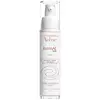What's inside
What's inside
 Key Ingredients
Key Ingredients

 Benefits
Benefits

 Concerns
Concerns

 Ingredients Side-by-side
Ingredients Side-by-side

Water
Skin ConditioningGlyceryl Stearate
EmollientCetyl Alcohol
EmollientStearic Acid
CleansingPropylene Glycol
HumectantPetrolatum
EmollientPEG-100 Stearate
Butylene Glycol
HumectantParaffinum Liquidum
EmollientDimethicone
EmollientParfum
MaskingMethylparaben
PreservativePropylparaben
PreservativeBHT
AntioxidantArbutin
AntioxidantCitric Acid
BufferingSodium Sulfite
PreservativeAcetyl Tyrosine
Skin ConditioningSaxifraga Sarmentosa Extract
Skin ConditioningPaeonia Suffruticosa Root Extract
Skin ProtectingAminopropyl Ascorbyl Phosphate
AntioxidantScutellaria Baicalensis Root Extract
AstringentGlutathione
Water, Glyceryl Stearate, Cetyl Alcohol, Stearic Acid, Propylene Glycol, Petrolatum, PEG-100 Stearate, Butylene Glycol, Paraffinum Liquidum, Dimethicone, Parfum, Methylparaben, Propylparaben, BHT, Arbutin, Citric Acid, Sodium Sulfite, Acetyl Tyrosine, Saxifraga Sarmentosa Extract, Paeonia Suffruticosa Root Extract, Aminopropyl Ascorbyl Phosphate, Scutellaria Baicalensis Root Extract, Glutathione
Water
Skin ConditioningCaprylic/Capric Triglyceride
MaskingParaffinum Liquidum
EmollientGlyceryl Stearate
EmollientPEG-100 Stearate
Squalane
EmollientPropylene Glycol
HumectantMicrocrystalline Wax
Emulsion StabilisingPEG-40 Hydrogenated Castor Oil
EmulsifyingBHT
AntioxidantCaprylyl Glycol
EmollientCarbomer
Emulsion StabilisingDisodium EDTA
Oleoyl Dipeptide-15
Skin ConditioningOleoyl Tetrapeptide-31
AntioxidantCI 17200
Cosmetic ColorantRetinal
Skin ConditioningTocopheryl Glucoside
EmollientTriethanolamine
BufferingWater, Caprylic/Capric Triglyceride, Paraffinum Liquidum, Glyceryl Stearate, PEG-100 Stearate, Squalane, Propylene Glycol, Microcrystalline Wax, PEG-40 Hydrogenated Castor Oil, BHT, Caprylyl Glycol, Carbomer, Disodium EDTA, Oleoyl Dipeptide-15, Oleoyl Tetrapeptide-31, CI 17200, Retinal, Tocopheryl Glucoside, Triethanolamine
Ingredients Explained
These ingredients are found in both products.
Ingredients higher up in an ingredient list are typically present in a larger amount.
BHT is a synthetic antioxidant and preservative.
As an antioxidant, it helps your body fight off free-radicals. Free-radicals are molecules that may damage your skin cells.
As a preservative, it is used to stabilize products and prevent them from degrading. Specifically, BHT prevents degradation from oxidation.
The concerns related to BHT come from oral studies; this ingredient is currently allowed for use by both the FDA and EU.
However, it was recently restricted for use in the UK as of April 2024.
Learn more about BHTGlyceryl Stearate is a mix of glycerin and stearic acid.
It is used to stabilize the mixing of water and oil ingredients. By preventing these ingredients from separating, it can help elongate shelf life. It can also help thicken the product's texture.
As an emollient, it helps soften skin and supports barrier-replenishing ingredients.
In cosmetics, Glyceryl Stearate is often made from vegetable oils or synthetically produced.
This ingredient may not be fungal-acne safe
Fun fact: The human body also creates Glyceryl Stearate naturally.
Learn more about Glyceryl StearateParaffinum Liquidum is also known as liquid paraffin. It is a type of highly refined mineral oil.
Like other oils, Paraffinum Liquidum has emollient properties. Emollients help soothe and soften the skin. By creating a barrier to trap moisture within, emollients help keep your skin hydrated.
Paraffinum Liquidum does not irritate the skin and is non-comedogenic.
Learn more about Paraffinum LiquidumPeg-100 Stearate is an emollient and emulsifier. As an emollient, it helps keep skin soft by trapping moisture in. On the other hand, emulsifiers help prevent oil and water from separating in a product.
PEGS are a hydrophilic polyether compound . There are 100 ethylene oxide monomers in Peg-100 Stearate. Peg-100 Stearate is polyethylene glycol ester of stearic acid.
Propylene Glycol is an odorless, colorless liquid. As a humectant, it helps skin retain moisture. It also aids in delivering active ingredients.
Another role of this ingredient is preventing a product from melting or freezing. Propylene glycol also adds antimicrobrial properties to a product, elongating product lifespan.
This ingredient is considered an organic alcohol and commonly added into both cosmetics and foods.
Those with sensitive skin or conditions may develop a rash when using this ingredient.
Learn more about Propylene GlycolWater. It's the most common cosmetic ingredient of all. You'll usually see it at the top of ingredient lists, meaning that it makes up the largest part of the product.
So why is it so popular? Water most often acts as a solvent - this means that it helps dissolve other ingredients into the formulation.
You'll also recognize water as that liquid we all need to stay alive. If you see this, drink a glass of water. Stay hydrated!
Learn more about Water